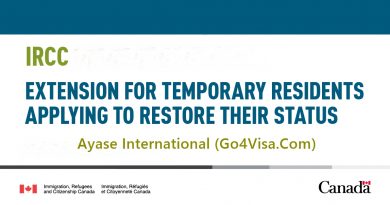Despite Growing Economic Challenges, BC’s Labour Market Remains Tight
Oct 31, 2022
VANCOUVER, October 31, 2022 – According to the BC Check-Up: Work, an annual report by the Chartered Professional Accountants of British Columbia (CPABC) on employment trends across the province, B.C.’s unemployment rate was 4.3 per cent in September 2022, down from 5.9 per cent in September 2021.
“British Columbia’s labour market saw significant job gains in the latter half of 2021 and the first half of 2022,” said Lori Mathison, FCPA, FCGA, LLB, president and CEO of CPABC. “This helped lower the unemployment rate to pre-pandemic levels. However, high inflation, rising interest rates, and supply chain problems resulted in turbulence in our labour market over the summer.”
As of September 2022, employment in B.C. increased in ten of the past 12 months for a net gain of over 70,000 jobs. However, since April job growth has slowed and in August 2022, the provincial workforce shed 28,100 jobs – the largest job loss experienced by BC in a single month since early 2021 – before recovering 32,900 positions in September.
“Despite a slowdown in employment growth recently, the provincial labour market remains tight,” continued Mathison. “In fact, the province has faced large labour shortages, which have been worsened by a decline in the proportion of residents searching for work.”
The most recent data available (August 2022) showed B.C.’s job vacancy rate was 6.1 per cent, which translated to 153,925 posted but unfilled positions. In comparison, in September 2022, B.C.’s unemployment rate was 4.3 per cent, which translated to 122,500 residents searching for work.
In addition, B.C.’s labour participation rate was 64.8 per cent in September 2022, down from 65.5 per cent in September 2019. To contextualize this, if BC’s participation rate was 65.5 per cent in September 2022, 31,100 more residents would be working or looking for work.
“With more open jobs than job seekers, employers across the province have struggled to find talent,” noted Mathison. “The job recovery has also varied significantly by sector, with some industries such as hospitality experiencing a particular challenge finding labour.”
The service sector workforce reached 2.25 million jobs in September 2022, an increase of 2.7 per cent from September 2021. While most industries expanded, hospitality continued to struggle, down 0.8 per cent over the past year and 8.8 per cent from September 2019. Goods sector employment was 497,700 in September 2022, an increase of 2.5 per cent over the past year.
Over the last three years, the service sector has driven employment, up 4.7 per cent from September 2019. Conversely, employment in the good sector declined by 0.3 per cent over that period, primarily due to employment in the sector’s largest industry, construction, falling 2.4 per cent.
“In a survey in August of CPAs in B.C., 87 per cent of respondents identified labour shortages as a major challenge to business success in 2022, the top ranked challenge,” concluded Mathison. “This shortage places a drag on businesses’ ability to maximize their production of goods and services for residents and reduces our economic growth. Going forward, we need to expand our workforce and provide greater skills training, particularly for industries facing the greatest scarcity of labour.”
Learn more about The BC Check-Up Report.
Despite economic challenges, BC facing record labour shortages
By Lori Mathison Dec 1, 2022
Over the past two and a half years, British Columbia’s economy has navigated significant economic challenges relatively well. However, as many businesses return to more normal operations, employers across the province are now facing labour shortages.
In October, our province’s workforce reached 2.76 million, an increase of 2.6 per cent compared to October 2021, and well above the 1.5 per cent working-age population growth over that period. As a result, B.C.’s unemployment rate dropped to 4.2 per cent, well below the 4.7 per cent unemployment rate in 2019, when the province last faced record labour shortages.
Currently, employers in B.C. are struggling to find enough talent to fill open jobs. In September 2022, there were nearly 160,000 open, unfilled job positions, considerably more than the 122,500 unemployed individuals seeking work.
B.C.’s labour participation rate (number of people who are employed or looking for a job, divided by the total working-age population) recovered from a significant decline in 2020. However, the labour participation rate was only 64.9 per cent in October 2022, below the 65.7 per cent participation rate in October 2019. While this may seem like a small decline, it has a very significant impact on the labour market. For example, a one percentage point decline in the participation rate represents over 44,000 individuals leaving the labour force.
There is also a skills mismatch in the province, with some industries facing more acute labour shortages. For instance, the construction, agriculture, hospitality, and other services (e.g., personal, household, and repair) industries all have considerably higher job vacancy rates than the provincial average.



![Work Permit [R205(a) – C11]: Canadian Interests – Significant Benefit – Entrepreneurs/Self-Employed](https://go4visa.com/wp-content/uploads/2017/12/AK-Blog.jpg)

